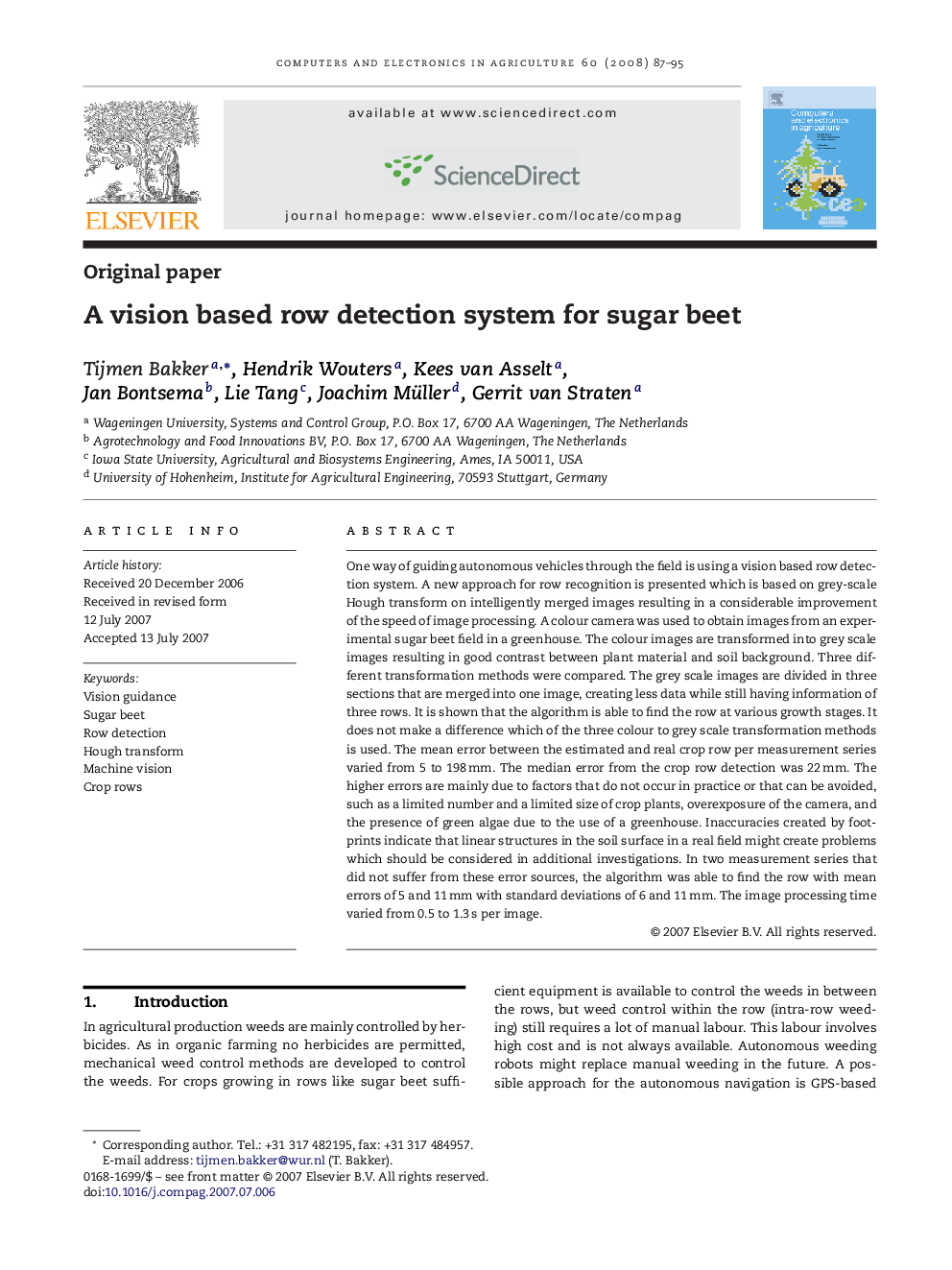| Article ID | Journal | Published Year | Pages | File Type |
|---|---|---|---|---|
| 85417 | Computers and Electronics in Agriculture | 2008 | 9 Pages |
One way of guiding autonomous vehicles through the field is using a vision based row detection system. A new approach for row recognition is presented which is based on grey-scale Hough transform on intelligently merged images resulting in a considerable improvement of the speed of image processing. A colour camera was used to obtain images from an experimental sugar beet field in a greenhouse. The colour images are transformed into grey scale images resulting in good contrast between plant material and soil background. Three different transformation methods were compared. The grey scale images are divided in three sections that are merged into one image, creating less data while still having information of three rows. It is shown that the algorithm is able to find the row at various growth stages. It does not make a difference which of the three colour to grey scale transformation methods is used. The mean error between the estimated and real crop row per measurement series varied from 5 to 198 mm. The median error from the crop row detection was 22 mm. The higher errors are mainly due to factors that do not occur in practice or that can be avoided, such as a limited number and a limited size of crop plants, overexposure of the camera, and the presence of green algae due to the use of a greenhouse. Inaccuracies created by footprints indicate that linear structures in the soil surface in a real field might create problems which should be considered in additional investigations. In two measurement series that did not suffer from these error sources, the algorithm was able to find the row with mean errors of 5 and 11 mm with standard deviations of 6 and 11 mm. The image processing time varied from 0.5 to 1.3 s per image.
